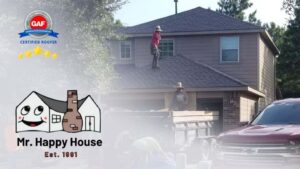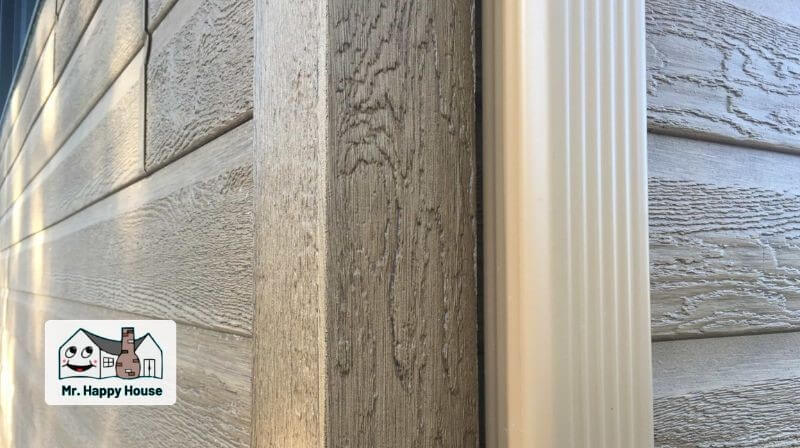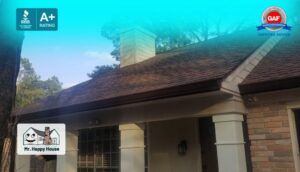
Best GAF Certified Roofers in The Woodlands, TX – Quality Roof Replacement, Gutters & Siding
Best GAF Certified Roofers in The Woodlands, TX – Quality Roof Replacement, Gutters & Siding Best GAF Certified Roofers in The Woodlands, TX – Quality

Choosing the right siding for your home is a significant decision, as it directly impacts your home’s appearance, durability, and maintenance requirements. Engineered wood siding is gaining popularity as a cost-effective and versatile option for homeowners. In this article, we’ll take an in-depth look at the pros and cons of engineered wood siding to provide you with the information needed to make an educated decision for your home.
Whether you’re renovating your current house or building a new one, understanding the attributes and potential drawbacks of engineered wood siding is essential in making a choice that suits your long-term goals and preferences.
Engineered wood siding, also known as composite wood siding or manufactured wood siding, is a versatile and popular building material used for cladding the exterior of homes and other structures.
Unlike traditional solid wood siding, which is made from a single type of wood such as cedar, engineered wood siding is created by combining various wood fibers, strands, or particles with adhesives and binders. This composite is then formed into siding panels or planks with the appearance of natural wood.
The key components of engineered wood siding typically include wood chips, sawdust, or wood fibers sourced from different wood species. These wood components are mixed with resins, waxes, and other additives to create a durable and weather-resistant material. The manufacturing process varies among different brands and types of engineered wood siding, but the end result is a product that replicates the look of wood while offering certain advantages in terms of performance.
Engineered wood siding is available in a variety of styles, textures, and finishes, making it a versatile choice for homeowners.
In the following sections, we will explore the pros and cons of engineered wood siding to help you make an informed decision about whether it’s the right choice for your home.
Engineered wood siding comes with several advantages that make it an appealing choice for homeowners. Understanding these benefits can help you assess if it’s the right option for your home. Here are some of the key pros of engineered wood siding:
Cost-Effectiveness: Engineered wood siding is often more budget-friendly than solid wood siding. Its lower initial cost and reduced maintenance expenses can make it an economical choice for many homeowners.
Environmental Benefits: Engineered wood siding is typically made from sustainable wood sources and may incorporate recycled materials. Choosing eco-friendly siding options can contribute to a more sustainable home.
Variety of Styles: This siding material is available in a wide range of styles, textures, and finishes, allowing you to achieve the desired look for your home. Whether you prefer a classic or modern appearance, there’s likely an engineered wood siding option that suits your taste.
Lower Maintenance: Engineered wood siding is relatively low-maintenance compared to cedar or redwood siding.
These advantages make engineered wood siding an attractive choice for homeowners looking for a balance between the aesthetic appeal of natural wood and the practical benefits of a manufactured material. However, it’s important to also consider the potential drawbacks of engineered wood siding, which we’ll explore in the next section.
While engineered wood siding offers various benefits, it’s essential to be aware of potential drawbacks and limitations. Here are some of the cons associated with using engineered wood siding:
Moisture Susceptibility: Engineered wood siding, despite its durability, is susceptible to moisture-related issues such as swelling, warping, or delamination of the siding, which can happen quite frequently if you live in a hot and humid climate.
Not the Best Choice for Siding: Although engineered wood siding is more durable than natural wood in some cases, it generally has a shorter lifespan compared to some other siding materials such as vinyl or fiber cement. While it can last for some years with proper care, it will not be as long lasting.
Limited Repair Options: Repairing damaged sections of engineered wood siding can be challenging. Unlike natural wood, which can often be patched or repaired more easily, engineered wood may require complete replacement of affected panels in the event of damage.
Initial Installation Costs: While engineered wood siding is cost-effective over its lifespan, the initial installation costs may be higher than other budget-friendly siding options. Quality materials and professional installation are essential to ensure the siding performs well.
Understanding these disadvantages can help you make an informed decision about whether engineered wood siding aligns with your home’s specific needs and your budget. Be sure to weigh the pros and cons carefully before making your final choice.
When choosing siding for your home, it’s essential to consider how engineered wood siding compares to other common siding materials. Each material has its own set of characteristics, advantages, and drawbacks. Let’s compare engineered wood siding to some of the alternatives:
Natural Wood: Solid wood siding offers a timeless and authentic look, but it often requires more maintenance and is susceptible to pests and decay. Engineered wood siding is a lower-maintenance alternative that still provides a wood-like appearance.
Vinyl: Vinyl siding is known for its affordability and minimal maintenance requirements. However, it may lack the aesthetic warmth of wood. Engineered wood siding offers a more natural appearance but requires slightly more maintenance than vinyl.
James Hardie Fiber Cement Siding: Fiber cement siding is highly durable and resistant to moisture, pests, and fire. It has a much longer lifespan compared to engineered wood siding but can be heavier and more challenging to install.
The choice of siding material depends on your priorities, such as budget, aesthetics, durability, and maintenance requirements. Engineered wood siding can be an excellent compromise for those who desire the look of natural wood with reasonable durability and cost-effectiveness.
It’s important to contact a local and reputable siding company and compare these options to determine which one best suits your specific needs and preferences for your home’s exterior.
Proper maintenance is essential to ensure the longevity and appearance of your engineered wood siding. While it’s lower-maintenance than some other materials, regular care can help it maintain its beauty and structural integrity. Here are some maintenance tips for engineered wood siding:
Cleaning: Periodically clean your engineered wood siding to remove dirt, grime, and mildew. This can be achieved using a soft-wash method or with careful pressure washing.
Inspect for Damage: Routinely inspect the siding for signs of damage, such as cracks, chips, or areas of delamination. Promptly address any issues to prevent further damage.
Repainting or Refinishing: Engineered wood siding will require repainting or refinishing more often than James Hardie siding products.
Trim Vegetation: Keep vegetation, such as trees and bushes, trimmed away from the siding to prevent moisture retention and potential damage.
Seal Joints and Gaps: Ensure that joints and gaps in the siding are properly sealed to prevent moisture intrusion. Use appropriate sealants or caulk recommended for the siding material.
Address Mildew and Mold: If mildew or mold appears, clean it promptly to prevent further growth. Use a mildew remover or a mixture of water and white vinegar.
Consider Climate: Engineered wood siding may require more maintenance in climates with extreme temperature fluctuations or high humidity. Be attentive to local weather conditions.
By following these maintenance tips, you can help preserve the beauty and structural integrity of your engineered wood siding, ensuring that it continues to enhance your home’s appearance and protection for years to come.
In the quest to find the perfect siding material for your home, considering the pros and cons of engineered wood siding is a critical step. This versatile option successfully bridges the gap between the timeless appeal of natural wood and the practical benefits of manufactured materials.
Engineered wood siding offers numerous advantages, cost-effectiveness and wide range of styles. Additionally, it can be an environmentally conscious choice, contributing to sustainability in construction.
However, it’s essential to be aware of potential downsides, such as susceptibility to moisture-related issues, the need for occasional refinishing, and potential environmental concerns during production.
Before making a final decision, consider how engineered wood siding compares to other materials and how well it aligns with your specific priorities and budget. Each siding material has its unique characteristics, and the choice should be a reflection of your preferences, home’s design, and local climate conditions.
Ultimately, the right siding material should not only protect your home from the elements but also enhance its appearance. Whether you opt for engineered wood siding or another material, maintaining it properly and addressing any issues promptly will help extend its lifespan and keep your home looking its best. With careful consideration and ongoing care, you can enjoy a beautiful and well-protected home for years to come.
We hoped you loved this article on the pros and cons of engineered wood siding, please share and tune in for more roofing, siding, and house painting content!
Our Services:













Best GAF Certified Roofers in The Woodlands, TX – Quality Roof Replacement, Gutters & Siding
Best GAF Certified Roofers in The Woodlands, TX – Quality Roof Replacement, Gutters & Siding Best GAF Certified Roofers in The Woodlands, TX – Quality

Are Gutters Part of the Roofing System?
Are Gutters Part of the Roofing System? Are Gutters Part of the Roofing System? When it comes to home maintenance, gutters often seem like a

Why James Hardie is The Best Option for Home Siding
Why James Hardie is The Best Option for Home Siding Why James Hardie is The Best Option for Home Siding James Hardie stands out whether











